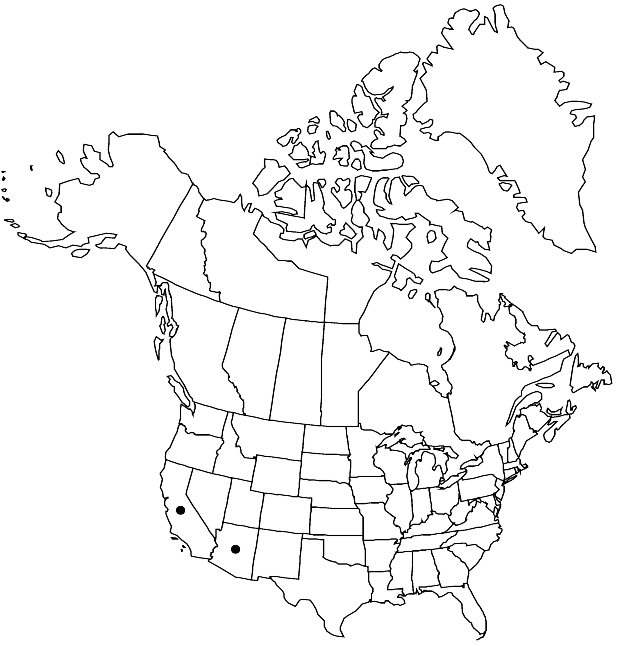Peritoma jonesii
Novon 17: 449. 2007.
Annuals, 50–100(–200) cm. Stems sparsely branched distally; glabrous or glabrate. Leaves: petiole 1.5–4.5 cm; leaflets 5, (proximal ones sometimes early deciduous), blade linear to elliptic, 1.5–4(–6) × 0.4–1.3 cm, margins serrate, apex long-acuminate, surfaces glabrous. Racemes 1–3 cm (6–40 cm in fruit); bracts unifoliate, obovate to spatulate, 2–15 mm. Pedicels 7–15 mm. Flowers: sepals persistent, connate ca. 1/2 of length, yellow, lanceolate, 1.6–2.6 × 0.8–1.2 mm, margins denticulate, glabrous; petals golden yellow, oblong to ovate, 10–13 × 2–4 mm; stamens yellow, 20–30mm; anthers 1.9–2.6 mm; gynophore 15–25 mm in fruit; ovary 3–6 mm; style 0.5–0.8 mm. Capsules not inflated, 40–60 × 2–5 mm, striate. Seeds 15–30, gray to black, triangular (sharply angled), 3–4 × 2.5–3 mm, rugose.
Phenology: Flowering summer.
Habitat: Dry sandy flats, desert scrub, roadsides
Elevation: 300-1200 m
Distribution

Ariz., Calif., Mexico (Baja California).
Discussion
Often treated as a variety of Peritoma lutea, P. jonesii grows at lower elevations, has a more southerly (though overlapping) range (T. H. Kearney and R. H. Peebles 1960), and differs in morphological features. Most notable are its larger, showier flowers and longer capsules.
Selected References
None.